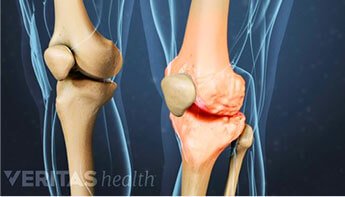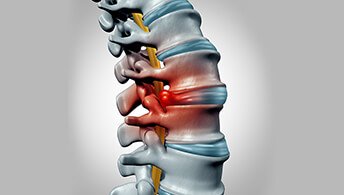Thoracic Epidural Injection
The membrane surrounding the spine and nerve roots in the neck is called the dura space; the space around that is called the epidural space. Nerves that travel through the epidural space to the shoulder, mid-back, and most commonly, the chest can become inflamed and cause pain. Thoracic epidural injections are an effective way to relieve chronic pain associated with these regions.
Often Used to Treat:
Thoracic epidural injections involve injecting a corticosteroid into the epidural space to relieve pain associated with the thoracic, or upper-middle, region of the back. This reduces inflammation, as well as acts as a diagnostic tool to determine the cause of a patient’s pain.
Thoracic epidural injections are often used to treat:





Who is a Candidate for Thoracic Epidural Injections?
Patients with chronic upper back pain that has persisted for longer than four weeks may benefit from thoracic epidural injections. Thoracic epidural injections are often given to patients who have not benefited from more conservative treatment therapies such as oral anti-inflammatory medications or physical therapy.
Those suffering from the following conditions may see the most benefit from thoracic epidural injections:
- Thoracic radiculopathy, damage or disruption to the nerve roots causing feeling loss, shooting pain, numbness, or burning sensation in the chest, side, or upper-mid back region.
- Herniated disc, irritation, pain, and swelling caused by a problem with a rubbery disk between the spinal bones.
- Spinal stenosis, a narrowing in the spinal canal resulting in increased pressure on the spinal cord and the nerves within the spine.
What is the Process for a Thoracic Epidural Injection?
Thoracic epidural injections are conducted on an outpatient basis. A physician will first apply a numbing agent, and using a fluoroscopy, or live X-ray, guide the needle accurately into the epidural space. A steroid, potentially combined with an anaesthetic, is then injected, reducing inflammation and irritation almost instantaneously. More than one injection may be necessary to feel full relief.
If the pain does not subside after the initial injection, an additional thoracic epidural injection may be required. Many patients see results immediately after the second injection, though effects can start within two to three days. Patients may receive up to three injections in a six-month period, with two or three weeks between each.
Risk Factors Associated with Thoracic Epidural Injections?
Thoracic epidural injections are considered a safe and effective treatment option toward alleviating chronic upper and mid-back pain. However, there are risks associated with any procedure. Possible complications include:
- Bleeding
- Headache
- Infection
- Allergic reaction to medication
Again, a physician may use fluoroscopy, as well as a dye injection, to ensure proper needle placement, which helps to reduce the risk of complications.
Success Rates Associated with Thoracic Epidural Injections
Eighty percent of patients given a corticosteroid injection mixed with an anaesthetic as part of a thoracic epidural injection experienced long lasting results in their level of pain after six procedures within a two-year period.
Effective thoracic epidural injection treatment works on a case-by-case basis, with many patients experiencing full pain relief. Thoracic epidural injections are minimally invasive and easy to perform, making them an appealing option for many who have not found relief elsewhere.
Is a Thoracic Epidural Injection Right for Me?
If your chronic upper back pain has continued for longer than four weeks and has not been helped by other therapies, you might consider this treatment. Contact one of our board-certified physicians to start treatment early and increase your chances of success.
Before Procedure
You will be contacted and interviewed about your current medications. You may be asked to stop taking some of them so that your doctor can properly monitor what medications are effective during your procedure.
Procedure – Patient Details
TESIs are similar to outpatient procedures. You will check into the facility, complete paperwork, and receive a hospital gown. You can receive an IV to help relax you. Once you are in the proper position, your physician will sterilize and numb your mid-back before using fluoroscopy (live x-ray) to guide a needle into the epidural space. Steroids and possibly an anaesthetic are injected, reducing inflammation and irritation. Your wound will be dressed before you go into recovery, and you will receive instructions for home care. You may require more than one injection for full relief. It is normal to experience discomfort for a few days following the procedure, but it will subside on its own.
Prior to the procedure, our office will contact you to ask about your medications. You may be asked to stop taking certain drugs several days before your visit. We will also contact you after the procedure to follow up on your recovery and your pain level.
Risk Factors
There are risks to any procedure, but TESIs are considered safe and effective. Possible complications include bleeding, headache, infection, allergic reaction to medication, and reactions caused by the medications themselves. Your physician will use fluoroscopy to ensure proper placement of the needle, reducing risk of complications. Your doctor will also fully discuss risks with you before the procedure.

At 360 Pain Treatment, our mission is to provide compassionate pain relief, restore prior function and activity levels, and optimize the quality of life for all.

360 Pain Treatment aspires to create a culture of care in our communities by helping those suffering with pain to live more pain-free and thus improving their quality of life.

- Compassion for all who are ailing and in need of help.
- Advancement of minimally invasive healthcare procedures that firstly considers patient wellbeing.
- Respect and inclusion for everyone we serve in our communities.
- Excellence and efficiency in all that we do.








